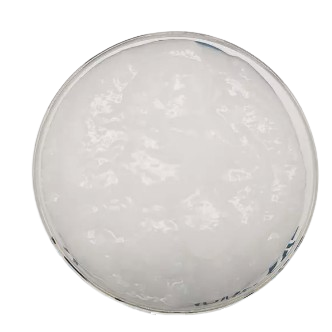A Paradigm Shift in Food Science: The Rise of Nanocellulose
In the dynamic world of food processing, the quest for the perfect texture, unwavering stability, and clean labels is perpetual. For decades, the industry has relied on a host of synthetic emulsifiers to keep our sauces from separating and our dressings creamy. But as consumers, particularly in India, pivot towards natural, sustainable, and healthier choices, the demand for innovative, plant-based solutions has skyrocketed. Enter nanocellulose, a remarkable nanomaterial poised to redefine the very essence of food formulation.
Derived from cellulose, the most abundant organic polymer on Earth, nanocellulose represents a groundbreaking advancement in **sustainable food ingredients**. For Indian researchers and food technologists, it's not just another additive; it's a gateway to creating next-generation products. These **nanocellulose-based emulsifiers** offer a unique combination of high performance, biodegradability, and natural origin. By creating incredibly **stable emulsions**, this technology addresses a core challenge in food manufacturing while aligning perfectly with the global push for greener chemistry and the "Make in India" initiative. This article delves into the science, applications, and immense opportunities that **nanocellulose applications** present for the Indian food industry.
Why Researchers and Brands are Turning to Nanocellulose
Unmatched Emulsion Stability
Nanocellulose particles form an irreversible, dense network around oil droplets, a phenomenon known as Pickering stabilization. This creates a physical barrier that prevents droplets from coalescing, resulting in emulsions that remain stable for months, even under harsh temperature fluctuations—a critical factor for India's diverse climate and supply chain.
Sustainable and Biodegradable
Sourced from renewable resources like wood pulp or agricultural waste, nanocellulose is a prime example of a **biodegradable emulsifier**. Its use significantly reduces the environmental footprint of food production, appealing to eco-conscious consumers and aligning with corporate sustainability goals.
Enhanced Food Texture and Mouthfeel
Beyond stabilization, nanocellulose acts as a fat mimetic. Its unique rheological properties help in **food texture enhancement**, providing a creamy, rich mouthfeel in low-fat products. This allows for the development of healthier mayonnaises, sauces, and desserts without compromising on sensory experience.
Clean Label and Natural Appeal
As a **natural additive**, nanocellulose helps manufacturers achieve a "clean label" by replacing synthetic chemicals like polysorbates or mono- and diglycerides. It can be listed as 'cellulose' or 'plant fiber,' which is easily understood and accepted by consumers seeking transparency in their food.
Transforming the Food Industry: Key Applications
Salad Dressings and Sauces
The primary challenge in dressings is preventing the oil and vinegar from separating. Nanocellulose creates exceptionally **stable emulsions**, ensuring a consistent, creamy product from the first pour to the last. It eliminates the need for vigorous shaking and extends shelf life dramatically.
Dairy and Dairy Alternatives
In products like ice cream, yogurt, and plant-based milks, nanocellulose prevents the formation of ice crystals, leading to a smoother texture. It also stabilizes the protein and fat components in dairy alternatives, preventing sedimentation and improving mouthfeel.
Bakery and Confectionery
Nanocellulose improves moisture retention in baked goods, extending freshness. In fillings and icings, it provides structure and stability, preventing syneresis (weeping of liquid). This is a significant innovation for **food processing** in the bakery sector.
Beverages and Juices
It acts as a suspending agent, keeping pulp, flavors, and other particulates evenly distributed in beverages. This **food industry innovation** ensures a consistent taste and appearance in every sip, from fruit juices to fortified health drinks.
The Indian Context: A Market Ripe for Innovation
The Indian food market is at a fascinating crossroads. With a burgeoning middle class, increasing health consciousness, and a strong governmental push for local manufacturing, the environment is perfect for disruptive technologies like nanocellulose. The use of **nanomaterial emulsifiers** is not just a global trend; it's a strategic opportunity for Indian R&D institutions and food companies.
The demand for **sustainable food ingredients** is growing exponentially. Indian consumers are actively reading labels and rejecting products with complex chemical names. Nanocellulose, as a plant-derived, biodegradable material, fits perfectly into this narrative. It enables brands to market their products as 'all-natural' or 'plant-based,' a powerful differentiator in a crowded market. Furthermore, the development of **nanocellulose-based emulsifiers for the food industry** in India can reduce reliance on imported synthetic additives, bolstering the national economy and creating a self-sufficient supply chain.
For researchers, this opens up a vast field of study. Optimizing nanocellulose extraction from local agricultural biomass (like sugarcane bagasse or coconut husk) could lead to cost-effective, regionally sourced **food emulsifiers**. Investigating its synergistic effects with other natural hydrocolloids can unlock novel textures and functionalities, paving the way for true **food industry innovation** that is both globally competitive and locally relevant.
Frequently Asked Questions
Nanocellulose is a nanomaterial derived from cellulose, the most abundant polymer on Earth, found in sources like wood pulp and cotton. Its unique structure, with both hydrophilic (water-attracting) and hydrophobic (water-repelling) regions, allows it to form a strong, protective barrier around oil droplets in water, creating exceptionally stable emulsions. This makes it a powerful, natural, and biodegradable emulsifier.
Yes, nanocellulose is generally recognized as safe (GRAS) for consumption. It is derived from natural, edible sources like plants. As a biodegradable and biocompatible material, it poses minimal risk and is considered a sustainable alternative to synthetic emulsifiers. Regulatory bodies worldwide, including FSSAI in India, are actively evaluating its applications.
Beyond emulsification, nanocellulose forms a complex network within food products. This network can trap water, increase viscosity, and provide a creamy mouthfeel without adding fat. It enhances food texture by acting as a stabilizer and thickener, leading to richer sauces, smoother ice creams, and more stable dressings.
The primary benefits are sustainability, stability, and health. Nanocellulose is renewable, biodegradable, and non-toxic. It creates highly stable emulsions that resist separation (creaming or coalescence) for longer shelf life. It also allows for the creation of low-fat products with a full-fat texture, meeting consumer demand for healthier options.
Ready to Innovate Your Food Products?
Connect with our experts to learn how nanocellulose can elevate your formulations and meet the demands of tomorrow's consumer.
Request a Consultation


